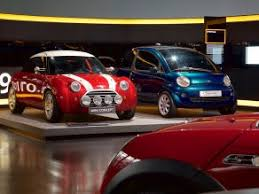1997 Mini ACV30
- Story Cars

- Oct 22, 2021
- 1 min read
The year 1997 saw the arrival of not one but three new MINI concept cars – the first was the ACV30 (for Anniversary Concept Vehicle – 30 years on from the original Mini’s 1967 Monte win), which was fittingly announced at the Monte Carlo Rally. This coupe-like model sat on an MGF chassis, making it an unusual mid-engined Mini, and was based on a Dreamworks proposal for the car – that had first been shown at the famous Gaydon shootout in 1995, which was when the BMW Board and Rover management chose the shape of the 2001 MINI.
If the ACV30 added nothing to the development of the new MINI per se, it did publicly showcase the fact that Rover was now seriously in the process of developing a Mini replacement after years of inactivity. And even if this was not the car to do it, the ACV30 did begin the process of softening up the public.
The Ivan Lampkin-styled interior formed the basis of the production R50’s set-up, sporting a prominent centrally-mounted speedometer and lots of bare metal. The ACV30 might not have looked like a MINI R50, but as well as its interior concept, the concept’s floating roof, chunky wheel arches, and white top were solid visual links.
The exterior styling of the ACV30 concept was attributed to the BMW Designer Adrian van Hooydonk and Frank Stephenson.

%20(4)_edited.png)







































Comments